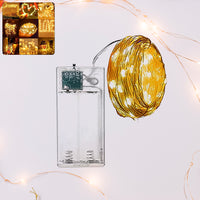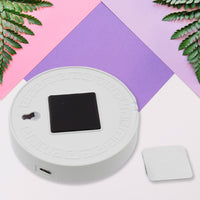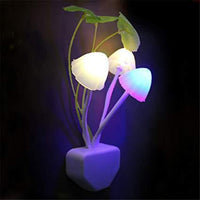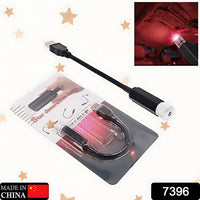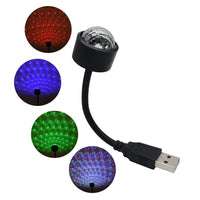When you take a sip of ice-cold water from your bottle hours after filling it, or when you pour hot coffee and find it still steaming later in the day, you might wonder: how does it work?
Insulated water bottles seem almost magical, but the truth is that science, clever engineering, and innovative materials are doing all the hard work.
In our busy modern lives, having a reliable insulated water bottle isn't just a luxury — it’s a daily necessity. Whether you’re heading to the office, exploring the outdoors, hitting the gym, or packing your child’s school bag, the right bottle ensures your beverages stay at the perfect temperature whenever you need them. But while we enjoy the convenience and comfort these bottles offer, few of us actually understand the fascinating technology hidden beneath their sleek exteriors.
In this article, we’re pulling back the curtain to reveal the hidden secrets inside every insulated water bottle. We'll explore the science that keeps your coffee hot and your water ice-cold for hours, the materials that make it possible, and the small engineering details that make a big difference in performance.
If you're looking to upgrade your hydration gear, we invite you to explore our carefully curated Water Bottle Collection at Deodap.
Whether you need a stylish bottle for yourself or a fun, functional option for your kids, you'll find a variety of choices designed for durability, performance, and everyday convenience.
Ready to uncover the secrets? Let’s dive deep into the amazing world of insulated water bottles.
1. What Exactly Is an Insulated Water Bottle?
At its core, an insulated water bottle is designed to reduce the transfer of heat between the liquid inside the bottle and the external environment.
This helps cold drinks stay cold and hot drinks stay hot for long periods, sometimes up to 24 hours or more.
But not all bottles are created equal. The best ones use a combination of material science and thermodynamics to create an environment where heat transfer is minimized almost completely.
2. The Real Secret: Vacuum Insulation Technology
The biggest "hidden secret" inside an insulated water bottle is something you can’t even see: the vacuum layer.
Here’s how it works:
-
The bottle is made with two walls — typically stainless steel.
-
Between these two walls, the air is removed, creating a vacuum.
-
Because there’s no air (and thus almost no matter) in a vacuum, heat cannot easily transfer by conduction or convection.
Conduction (transfer of heat through direct contact) and convection (transfer of heat through fluids like air or water) both require particles to move energy. A vacuum removes this pathway, making it extremely difficult for heat to pass through.
Thus, your cold drink doesn’t warm up from the outside air, and your hot drink doesn’t lose its heat to the environment.
✅ Fun Fact:
Vacuum flasks (also called Dewar flasks) were first invented in 1892 by Sir James Dewar. The basic principle has stayed the same for over 130 years!
3. The Role of Materials: Why Stainless Steel?
Another secret lies in the materials used.
Stainless steel is the material of choice for most premium insulated bottles.
Why?
-
It’s strong and durable.
-
It resists corrosion.
-
It doesn’t easily absorb flavors or odors.
-
It provides a clean, food-safe surface.
On top of that, the outer wall of the bottle often has a powder-coated or painted finish to help grip and further protect the steel from scratches and dents.
Some bottles (especially cheaper ones) may use aluminum, plastic, or even glass, but stainless steel remains the gold standard for performance and safety.
4. Minimizing Radiation: Reflective Coatings
Even with a vacuum, there’s still a third way heat can transfer: radiation (think infrared energy or "heat waves").
Some high-end bottles add a reflective coating on the inner wall (like a mirror) to reflect heat radiation back toward the liquid, minimizing energy loss even further.
This is another hidden feature most people never realize exists inside their bottles!
5. Smart Engineering Details: More Than Just Walls
Insulated water bottles also feature a range of smart design touches, such as:
-
Double-Walled Caps:
A vacuum-insulated body would be pointless if the lid conducted heat! Good bottles have insulated or double-walled caps to seal in the temperature. -
Silicone Seals:
To prevent leaks and improve thermal efficiency, lids often have silicone gaskets that ensure an airtight seal. -
Wide Mouths:
Some designs allow for easy filling, cleaning, and the addition of ice cubes without sacrificing insulation performance. -
Threaded Neck Design:
High-quality threading prevents accidental leaks while minimizing areas where heat can escape.
6. Why Do Some Bottles Sweat and Others Don’t?
You might have noticed that some bottles "sweat" — they form condensation on the outside when filled with cold water.
Good insulated bottles don’t sweat because:
-
The vacuum prevents warm, humid air from cooling against the surface.
-
There’s no heat exchange between the outside and the inside.
Bottles that sweat are usually single-walled and lack proper insulation.
7. How Long Can an Insulated Bottle Maintain Temperature?
The performance of a bottle depends on several factors:
-
The quality of the vacuum seal
-
The thickness of the walls
-
The presence of additional technologies (like reflective coatings)
-
External conditions (extreme heat or cold)
Typical performance claims:
-
Cold drinks: 12–24 hours
-
Hot drinks: 6–12 hours
Top-tier brands like Hydro Flask, YETI, or Stanley often deliver even better results thanks to tighter tolerances and better construction.
8. Insulated vs Non-Insulated: Which Is Better?
It depends on your needs.
| Feature | Insulated Bottles | Regular Bottles |
|---|---|---|
| Temperature Control | Excellent | Poor |
| Weight | Heavier | Lighter |
| Durability | Very High | Varies |
| Cost | Higher | Lower |
| Eco-Friendliness | High (Reusable) | Varies |
Insulated bottles are perfect for people who spend long hours outside, work in offices without easy access to cold water, or just love a refreshing sip at any time.
9. Common Misconceptions About Insulated Bottles
Myth 1: Insulated bottles actively cool or heat your drink.
❌ No — they simply preserve the temperature your drink already has.
Myth 2: Adding ice or boiling water damages the insulation.
❌ Not true — good bottles are built to withstand both extremes (though you should check the manufacturer's instructions).
Myth 3: Insulation wears out over time.
✅ Partially true — if the vacuum seal is compromised (by dropping the bottle, denting it badly, or extreme wear), performance will degrade.
10. Caring for Your Insulated Water Bottle
To make sure your bottle continues to perform its best:
-
Hand wash whenever possible.
Dishwashers can damage the vacuum seal or coatings on some bottles. -
Dry the bottle completely.
Prevent mold growth, especially around the lid and gasket. -
Avoid dropping it.
Major dents can break the vacuum seal. -
Don’t store acidic drinks long-term.
Highly acidic liquids can slowly damage the inner walls over months or years.
11. Innovations in Insulated Bottles
Modern water bottles are now incorporating even more features, such as:
-
Built-in UV-C light sterilization (like the Larq bottle)
-
Smart lids that track your daily water intake
-
Filter attachments to purify water on the go
-
Eco-friendly manufacturing using recycled stainless steel
The insulated water bottle industry is not just about keeping drinks cold anymore — it’s about combining convenience, health, and sustainability in every sip.
Relevant Products:
Double walled Stainless Steel Water Bottle
Stainless Steel Insulated Vacuum Bottle (600ml)
Vacuum Insulated Water Bottle with LED Temperature
Final Thoughts: More Than Just a Bottle
Next time you take a drink from your insulated bottle, know that you’re holding a masterpiece of physics, design, and innovation in your hand.
From the invisible vacuum layer to the sturdy stainless steel walls, everything has been carefully engineered to give you the simple pleasure of the perfect sip — anytime, anywhere.
So the next time someone admires your bottle, you can proudly share the hidden secrets they never knew were inside.


